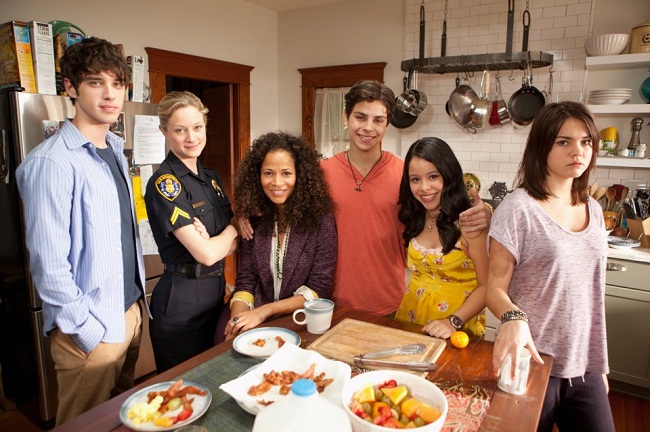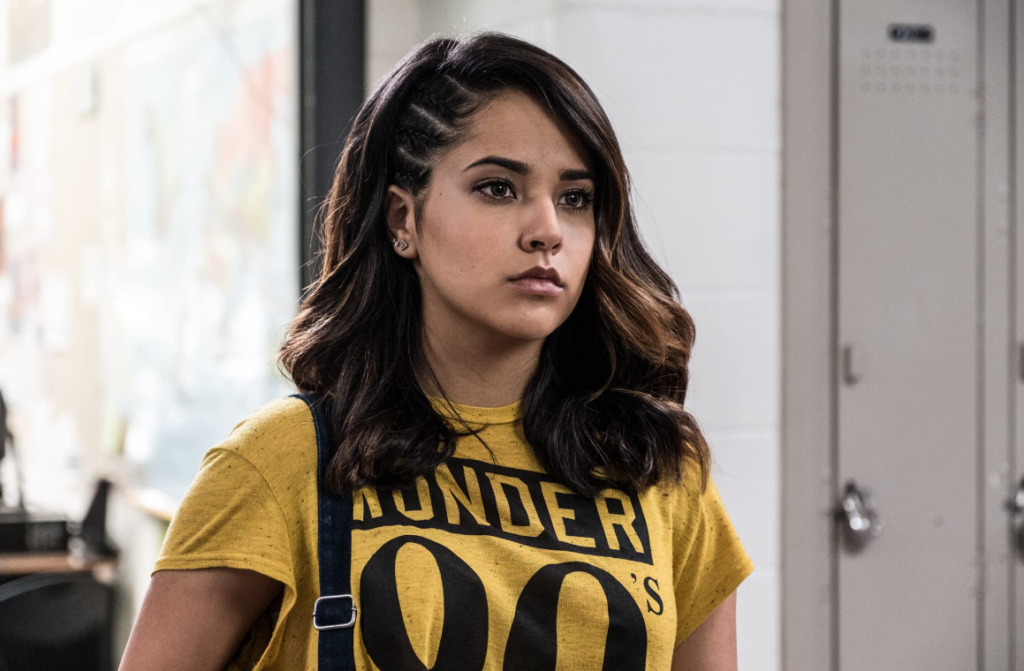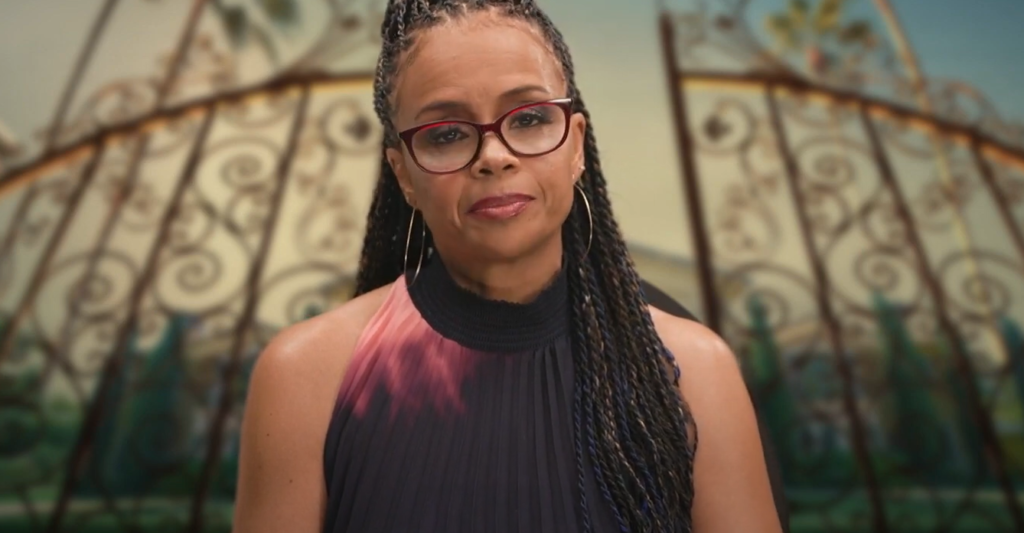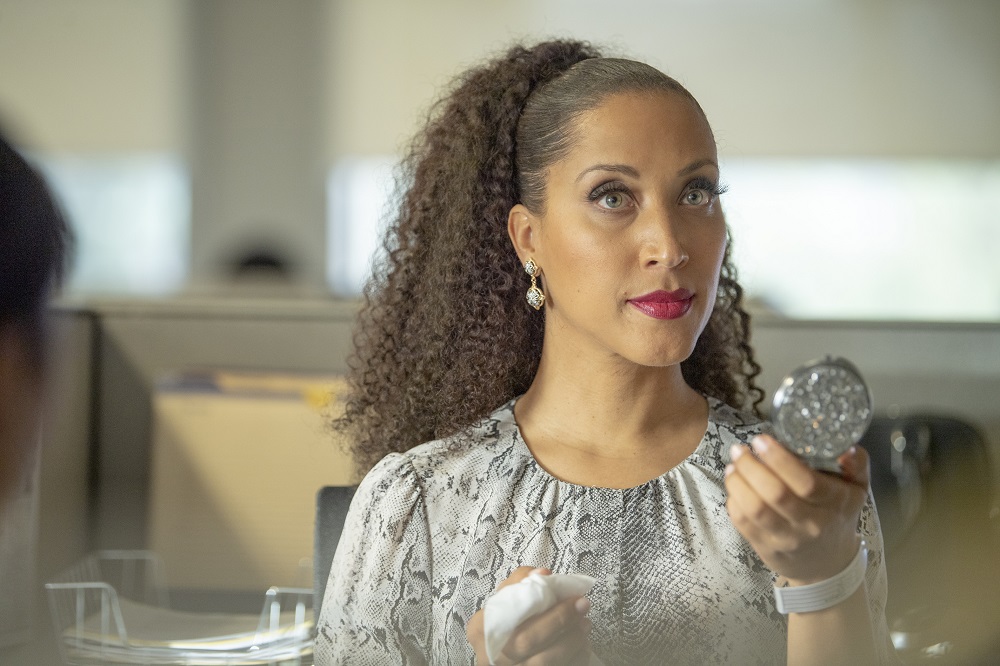
The new fantastic, flashy, female-fronted shows of the season have received seemingly endless and endlessly deserving ink. We all love “Orphan Black” and
“Orange Is the New Black,” like a lot a lot a lot a lot lot lot. But there’s a quieter, also deserving show of the summer
that has been quietly revolutionary in its own way. And that show is “The Fosters.”
At its surface, it’s just another family drama. Big brood faces adversities large and small. Heartwarming familial love triumphs over everything. But there
are also some obvious and and obviously important differences. This is a two-mama drama, a household led by two gay women who are in a committed (and now
legally recognized) relationship. And this, this makes all the difference.
We humans are a visual bunch. We like to be shown, not told. We like to see what makes us different and makes us the same. In the absence of those visual
and personal cues we have this terrible tendency to believe the worst in each other. Racial stereotypes. Gender stereotypes. LGBT stereotypes. Those
stereotypes can breed bigotry, hatred and violence. Most of that – not all, clearly, but most – comes from ignorance. People naturally fear what they don’t
know and don’t understand. So showing them, exposing them, to these things becomes even more important.
Television has always been a powerful medium for shedding light in dark places. Too often it gets used to feed us comfort and laugh tracks. But at its best
it’s a mirror of our best selves. Of the world we should be seeing and need to see – a world reflecting our richness and diversity. A world where we’ve all
got a place around that proverbial table. What we do once we get there, well, that’s on us. But we should all be allowed to sit together at least to start.
And that – taking the long road home – brings me back to “The Fosters.” TV has never shown us a more clear picture of lesbian parenting (sorry, Callie and
Arizona – but that baby’s kind of a glorified prop) than this little ABC Family drama that could. A blended family, a multi-ethnic family, a LGBT family, a
loving family – “The Fosters” is all these things, yet in the end just simply family. This is a show about a family, and while the individual components of
this family may be different from yours, we all recognize its universal mission. Protect one another, support another, love one another. These are things
we all understand.
So when we see two women doing these things for their family, even if on TV, it matters. It matters because it models – for those who have never seen or
dreamed or realized it before – what an LGBT family looks like. That we’re no so scary, not so terrible, not so other. To quote little Scout Finch, “I
think there’s just one kind of folks. Folks.”
Of course, all of this modeling wouldn’t mean much if the show itself wasn’t so very solid. If you didn’t tear up at least once – something in my eye, it
was something in my eye, dammit – during its 10-episode summer run then I attribute it to severe dehydration and recommend you drink more fluids
immediately. Some shows just try too hard (cough, “The New Normal,” cough) to show the new LGBT family. But “The Fosters” didn’t have to strain to make us
believe, it just got down to the business of showing us.
Whether it was how a lesbian family handles parenting alongside one of the children’s birth father or deals with embarrassment from another child about
being nontraditional, the situations – and how they handled them – felt organic. This show could have easily been like an After School Special of the Week.
But instead it made the mundane extraordinary. Parents, families, deal with the silly to the life-threatening and for the most part all they have is humor,
grit and that all-important glue of love to get through them.
Lena and Stef, along the way, became TV’s first legally married LGBT couple since the Supreme Court overturned Prop. 8 and DOMA in the summer season finale
on Monday. And in doing so showed people on the most basic level how what happens in Washington D.C. matters in the living rooms of everyday Americans
across this county. Elections have consequences. Legal rulings change lives. Lena and Stef can get married and the government will recognize them as such.
And, better yet, we’re happy it does – we’re happy for them.
In the end, “The Fosters” worked because we could always feel the love. It never waivers, and shone through every possible obstacle. Seeing truly is
believing. I sure can’t wait to see them again in January.
__________________________
Dorothy Snarker writes for her blog Dorothy Surrenders and also for After Ellen. You can follow her on Twitter.
Reprinted with Permission.







